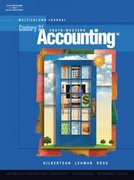Question
LOL (the Company), an SEC registrant with a calendar year-end, is a manufacturer and distributor of sports equipment. The Company was created in 1989 and
LOL (the "Company"), an SEC registrant with a calendar year-end, is a manufacturer and distributor of sports equipment. The Company was created in 1989 and is headquartered in Southern California. The Company has manufacturing operations and numerous sales and administrative locations in the United States. LOL files a consolidated U.S . federal tax return. (This case will not consider the evaluation of the state jurisdictions; it will only consider the federal jurisdiction.)As LOL's auditors, you are now performing the Company's year-end audit for the fiscal year ended December 31, 2010, and have the following information available to you:
?LOL draft income statement and excerpt from tax footnote as of December 31, 2010 (Handout 1).
?A deferred tax asset realization analysis showing pre-tax book income projections (Handout 2).
?The projected income schedule (realization analysis above) projects organic growth beginning in 2012 after stemming the decrease in pre-tax book income.
?LOL does not have the ability to carry back any losses to prior periods.
?A significant customer declared bankruptcy in 2010; therefore, the Company wrote off all accounts receivable from this customer. The Company is considering the exclusion of such expense when evaluating whether future income is objectively verifiable.
?The Company does not have a history of operating losses or tax credit carry forwards expiring unused.
?The Company has identified the following possible tax-planning strategies:oSelling and leasing back manufacturing equipment that would result in a taxable gain of $20 million. oSelling the primary manufacturing facility at a gain to offset existing capital loss carryforwards.
Required:
?Question 4 ? Would the tax-planning strategy to sell and lease back manufacturing equipment be a tax-planning strategy that is considered prudent and feasible? Why or why not?
?Question 5 ? Would the tax-planning strategy to sell but not lease back the primary manufacturing facility be a tax-planning strategy that is prudent and feasible? Why or why not?



Step by Step Solution
There are 3 Steps involved in it
Step: 1

Get Instant Access to Expert-Tailored Solutions
See step-by-step solutions with expert insights and AI powered tools for academic success
Step: 2

Step: 3

Ace Your Homework with AI
Get the answers you need in no time with our AI-driven, step-by-step assistance
Get Started


